Affiliate links on Android Authority may earn us a commission. Learn more.
Hearables: The game to own your ears is on
Published onSeptember 5, 2017
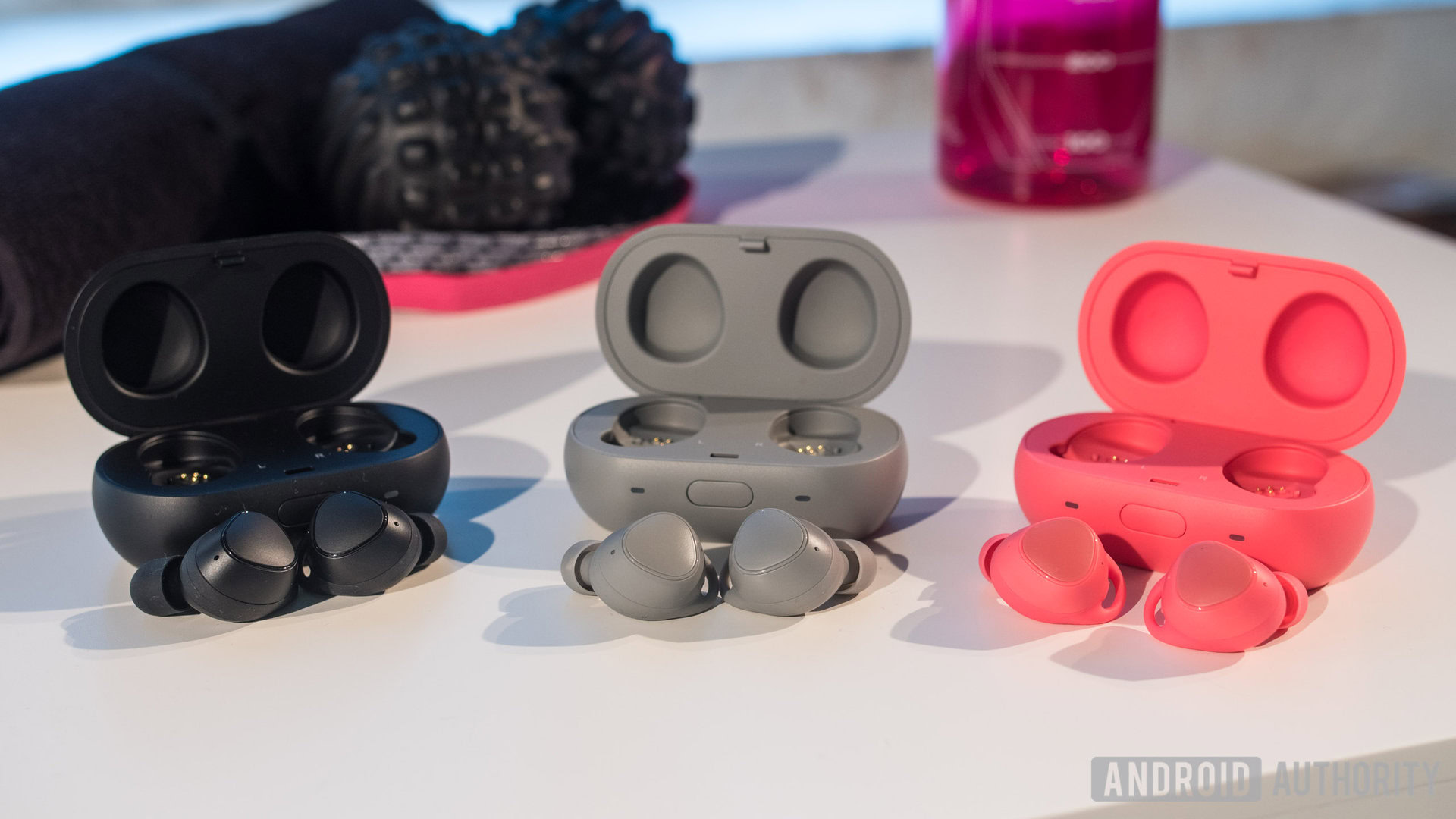
While the average consumer is still digesting the idea of having something connected around the wrist, a new wearable kid is already exploring the block. This kid goes by the name ‘Hearable’ and he might be owning the streets in a very near future.
Hearables? You mean wearables, right?
Nope. Hearables are wirelessly connected, smart – and in most of the cases companion – headphones or earbuds that improve your hearing experience, allowing you to use your voice to give commands to a digital system.
You can think of hearables as the natural evolution of wireless headphones. Compared to these, hearables add a significant layer of computational power and overall intelligence. Aside from improving the core audio experience or providing you with the right amount of tech to fine-tune your personal real-world hearing profile, hearables offer biometric support as well. Tracking steps, measuring your stress level or even analyzing your sleep pattern come into play. The broad spectrum of applications could indicate that hearables are the next big thing in the personal electronics market.
This being said, there are some caveats to bear in mind. To give some context, let’s take a trip down the short hearable memory lane.
The rise of hearables
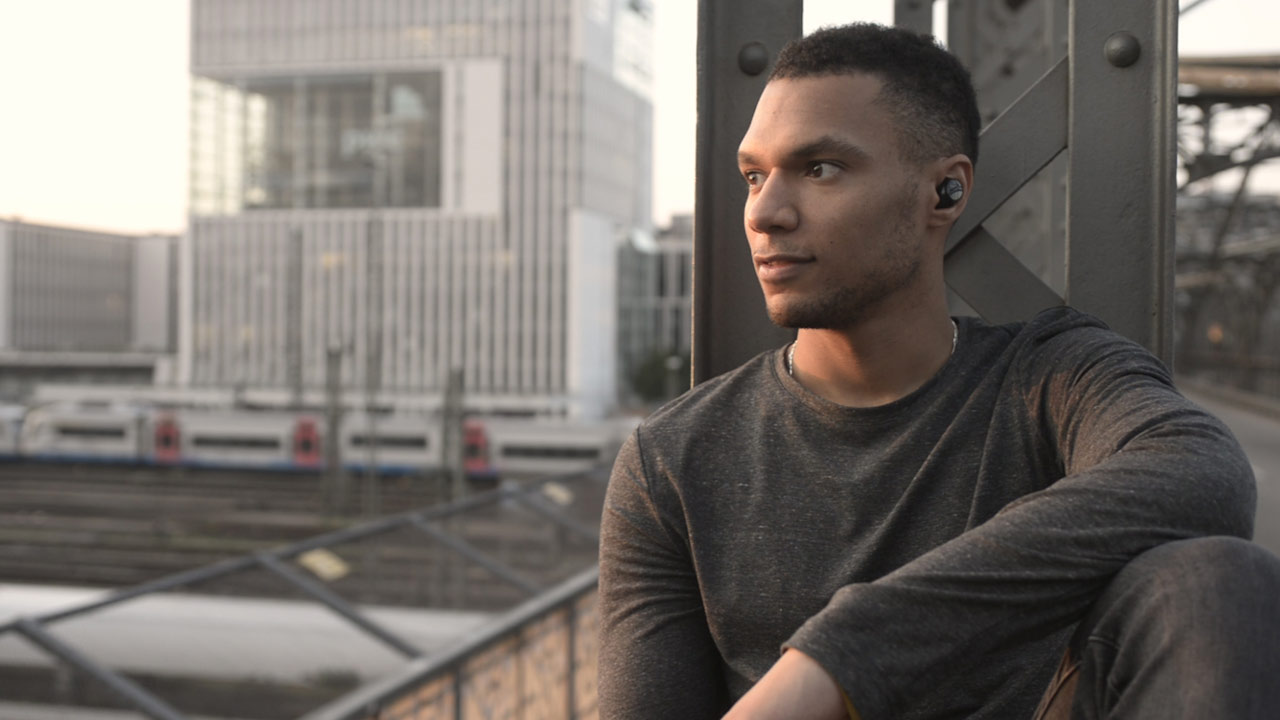
Flash back to 2014. The year that will be marked in the tech edition of history books as the year hearables really became a thing. Two small European tech companies, Earin and Bragi, accepted the challenge to redefine the entire headphone market. Earin, a Swedish company headquartered in the beautiful Malmo, launched a Kickstarter campaign to turn its wireless dream into reality. 600 Miles away, Bragi, a German tech startup based in Munich, had its own vision on the future of wireless audio and decided to turn to the crowd as well. Both companies crushed their funding goals and kicked off the beginning of a new era, the era of hearables.
Both companies crushed their funding goals and kicked off the beginning of a new era, the era of hearables.
Earin and Bragi delivered on the promise and shipped their hearables. The M-1 was Earin’s first throw at smart in-ear headphones, while Bragi brought The Dash to life. Where the M-1s mainly focused on making wireless audio as crisp as possible, The Dash really integrated the notion of ‘smart’ headphones by tracking vital functions next to delivering a solid audio experience.
Ever since these two tech startups pioneered the hearable space, many have followed their example. This was mainly thanks to the major consumer adoption of crowdfunding in 2014. Somewhat surprisingly, some of the smaller companies were the ones innovating at the time, paving the way for mass consumer brands to later throw their hats into the hearable ring as well. Samsung came first with its original IconX earbuds, to be followed by the Sony Xperia Ear and the Apple AirPods. More recently we learned that Google might be working on its own pair of hearables as well.
The table attached below (via WiFore) of hearable devices on crowdfunding platforms makes it clear that smart earbuds aren’t going away any time soon. But before jumping to conclusions and predicting that there will be one king to rule them all, let’s add the ‘hearing aid’ market to the hearable equation. With all the computational power and audio betterment features, one could say that hearables not only have the potential to serve as entertainment-oriented products, but also as health-focused devices.
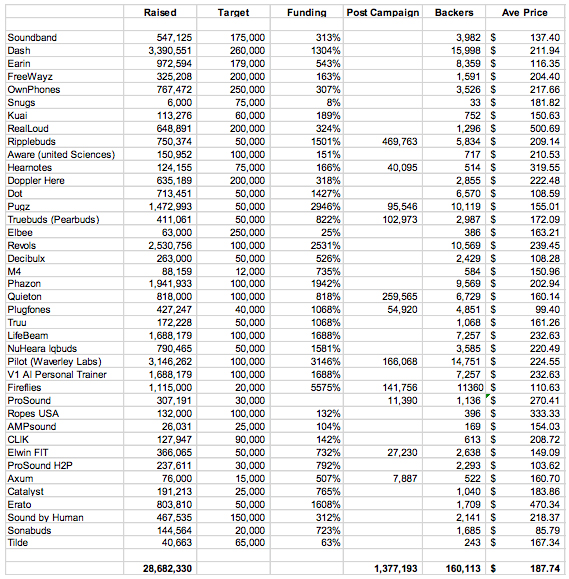
So would it be safe to conclude that hearables are the future of the hearing aid market as well? Theoretically speaking, maybe. But from a practical point of view, every manufacturer would have to file for FDA approval, which isn’t the perfect go-to-market strategy if you’re aiming for critical mass adoption. It’s definitely safe to say that current manufacturers of hearing aid hearables and more entertainment-oriented hearables need to talk to avoid unnecessary discussions and killing innovation.
Main drivers of (future) success
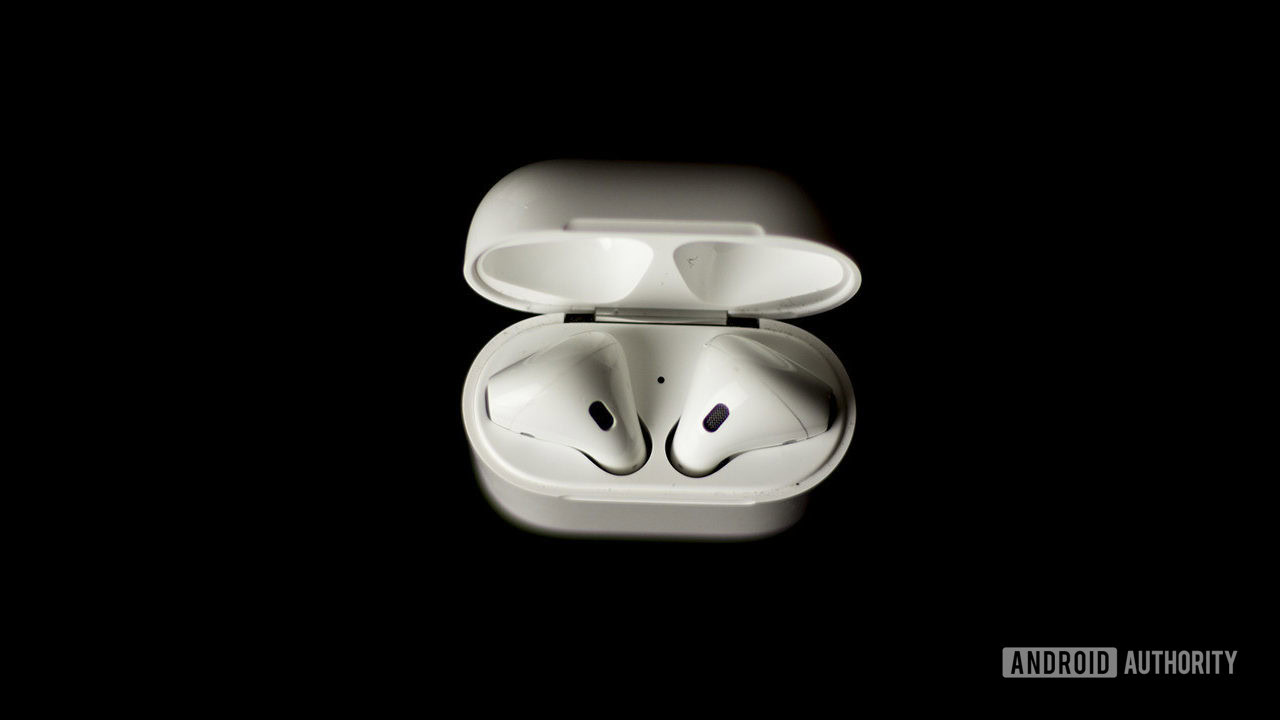
Independent of how things evolve, a couple of players will most likely define and steer the market. But what will be the main driver of this success? Will it be production and distribution power, a certain brand appeal, or something entirely different? As things are looking today, an important driver of success will be linked to the capacity of hearable players to build an ecosystem or platform around the hardware and technology.
The first signs of this strategy can be found by looking at both Bragi and Doppler Labs, another promising player on the hearable market. The Bragi Operating System aims to be the first Kinetic User Interface for hearable tech, placing your body at the core of the operating system. Doppler Labs has the same approach but makes it a bit less conceptual by offering a strong companion app for its Here One buds, with AI as the main technology to improve your user experience.
Building a strong OS around hearables will most likely be an important strategic lever to success
Building a strong OS around hearables will most likely be an important strategic lever to success. This naturally evokes the question with regard to hearables as companion or standalone devices. For well-established brands such as Samsung or Apple, the answer seems relatively straightforward. Their hearable products work closely together with their mobile brothers and sisters. Mobile is still the main intelligence and hearables are another I/O device, as it is the case with wearables up to today. For up-and-coming brands, the standalone approach with plug-and-play alike integrations for the main operating systems (Android and iOS) might be the way forward.
Hearables vs. wearables vs. mobile phones
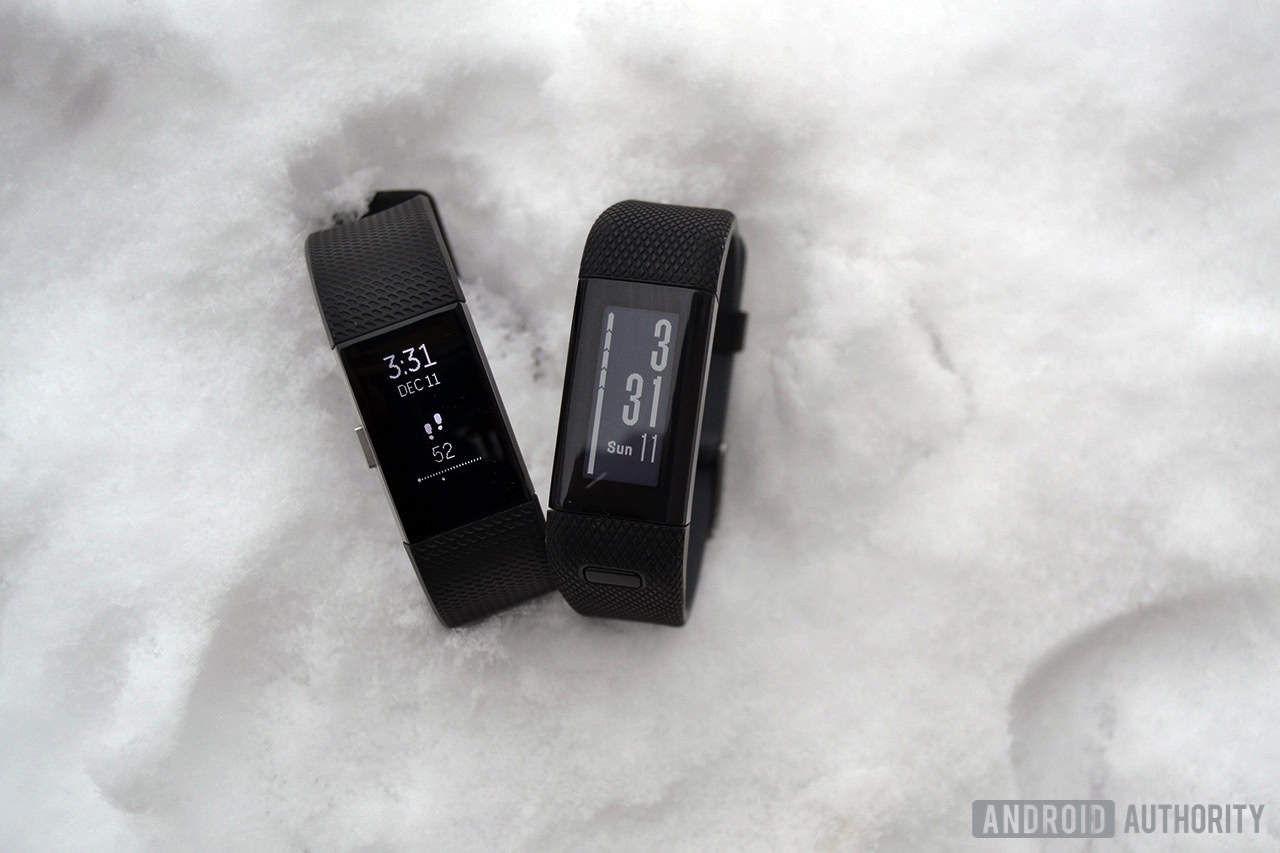
Compared to wrist-centric wearables, hearables definitely have less obstacles to overcome
Compared to wrist-centric wearables, hearables definitely have less obstacles to overcome. The main challenge fitness trackers and smartwatches face relate to user engagement. It’s one thing to capture data, but it’s an entire different thing to transform data into a compelling story for users. The likes of Fitbit, Withings, and Apple use gamification techniques to keep users interested and engaged, though integrating gamification represents a significant cost and is one of the reasons some wearable players have abandoned the space or sold their company to bigger players. Hearables don’t need to think of content creation since they are using existing content. So, not having to concentrate on content frees up the necessary space and scale to focus on the hardware.
The potential of hearables to replace mobile as the go-to platform is relatively high as well. One reason being the much more integrated and sense- complementary form factor. Not having to take a phone out of your pocket or watching your wrist for incoming messages is less disruptive and more subtle. A second reason to back this assumption is the commoditization of smartphones. Many tech companies are currently looking for the next big thing. The fact that the wrist-focused market isn’t picking up as expected makes these companies shift focus. Now that the hearable market is growing fast, it’s an educated guess to start working out concepts and value propositions for this new form factor.
It’s not impossible to think of your phone or your watch as the companion device to your hearable. Of course, this depends a lot on the context — the fact that you’re not (yet) able to take pictures with hearables could influence the overall adoption process, for example.
The voice of search
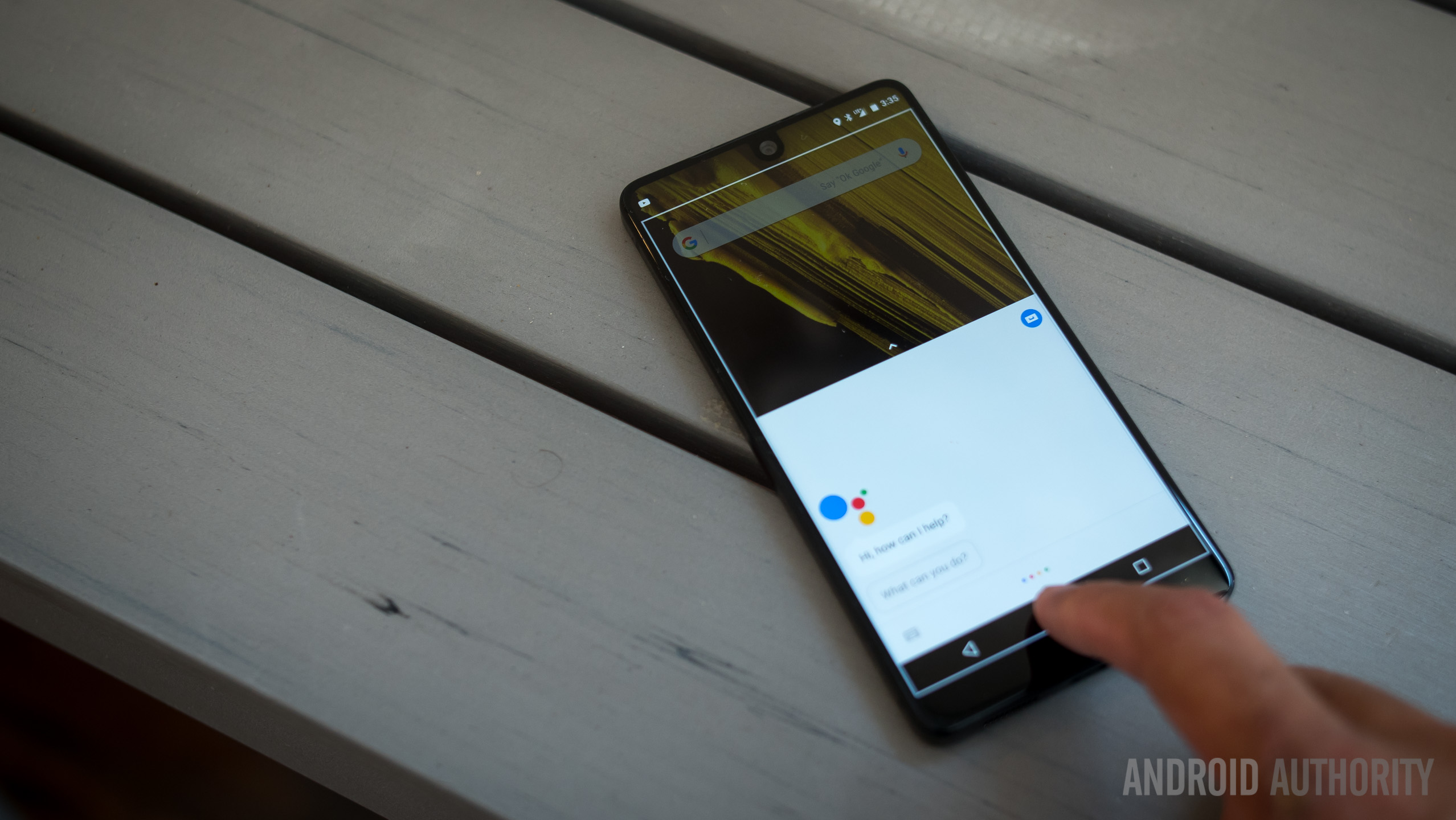
Another important new trend to be taken into account in the battle for the ears is Voice Enabled Search (VES). People all around the world have stopped typing random words into a search engine and started using their voice to search for stuff. The popularity of smart home devices such as the Amazon Echo or Google Home and their respective virtual assistants are collectively training people to use their voice and make search and commands more conversational.
Hearables are at the right place on your body and have the necessary intelligence for voice search and command purposes. Moreover, once AI is correctly ported to hearables, you could be controlling your entire home by simply talking to your virtual assistant on your hearable. Smart speakers such as Google Home could be a thing of the past sooner than later.
What’s next?
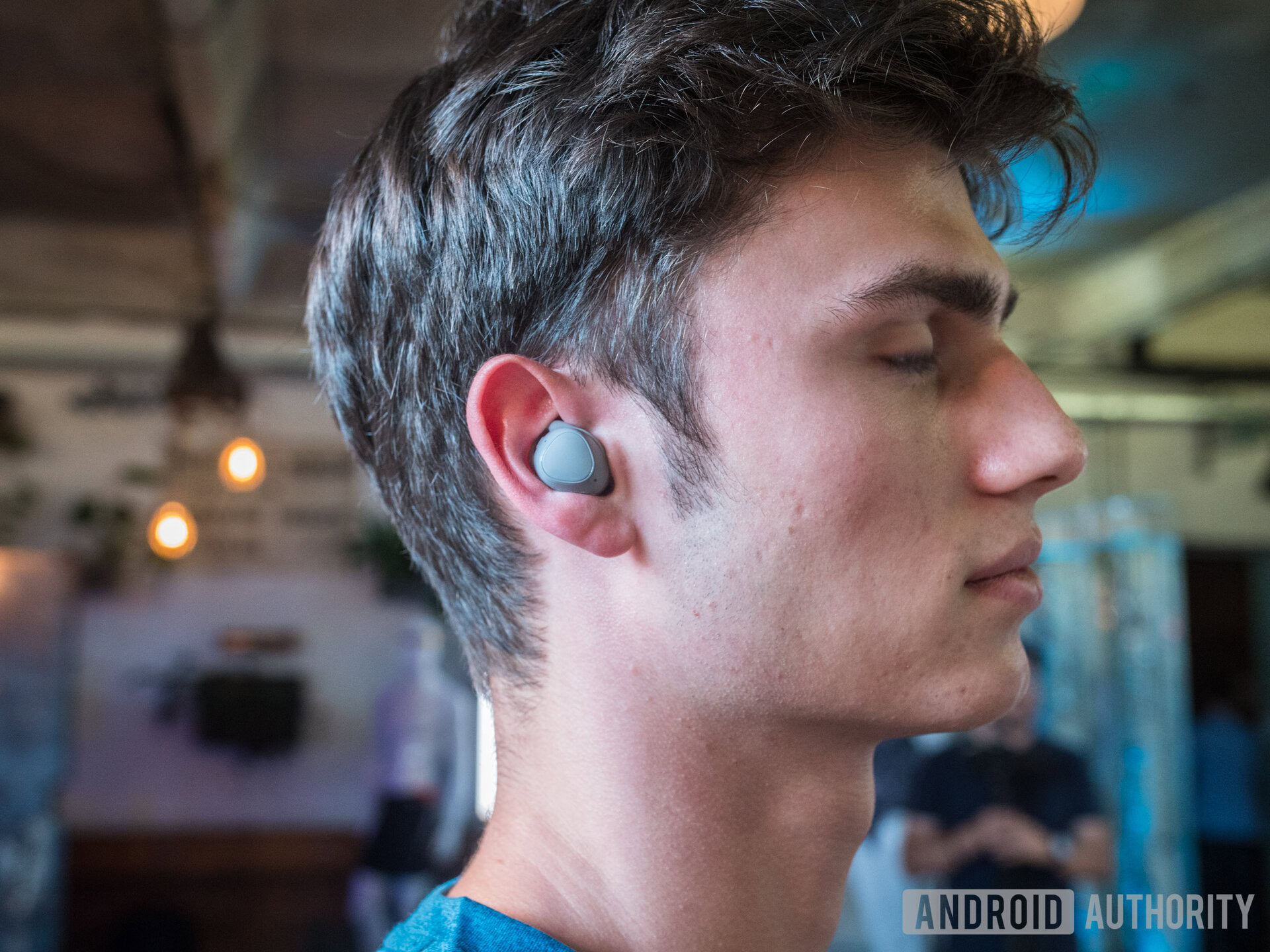
The potential of hearables is vast, certainly given the current technological trends and evolutions. Voice search is on its way towards mass consumer adoption, artificial intelligence is finding its way to smaller chipsets, and the concept of hearables itself is much less disruptive. It looks like hearables have a bright future. Imagine everybody wearing a subtle, aesthetically correct hearable that allows you to improve hearing, control surroundings, steer homes, translate other languages, and make life all around easier. From a technological point of view, this could be tomorrow.
Imagine everybody wearing a subtle, aesthetically correct hearable that allows you to improve hearing, control surroundings, and more.
This being said, these are still the early days. The more hearables enter the game of body improvement, the higher the likelihood of having to file for FDA approval which could immediately kill the frugal innovation process. Another point is the willingness of mass consumer brands to shift their attention from the traditional wearables to the more innovative hearables, given the enormous budgets already spent on creating and nurturing this segment. And are chipset manufacturers already willing to port the computational power needed for fully-fledged artificial intelligence to in-ear form factors?
There are quite a few challenges left to tackle before we know who will win the battle for the ears! But one thing’s for sure, the game is on.
This article was written by Ludwig Dumont.